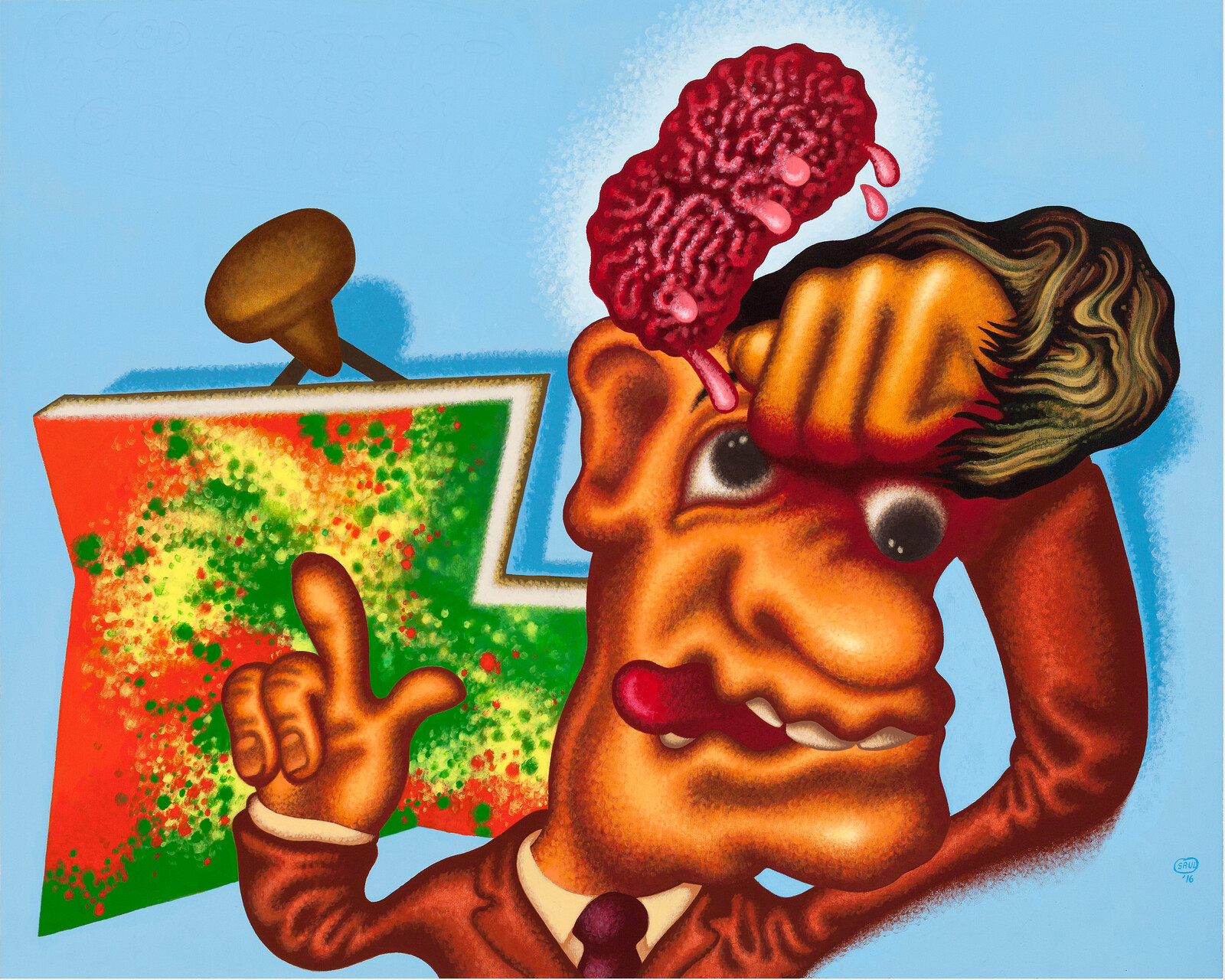Pop, Funk, Bad Painting and More
September 20, 2019–January 26, 2020
76 allées Charles de Fitte
Les Abattoirs, Musée - Frac Occitanie Toulouse
31300 Toulouse
France
Hours: Wednesday–Sunday 12–6pm,
Thursday 12–8pm
T +33 5 62 48 58 00
lesabattoirs@lesabattoirs.org
This retrospective, the most comprehensive exhibition to date, by American artist Peter Saul (born in 1934), spans the career of one of the very last contemporaries of Pop Art, from the late 1950s to the present day. Peter Saul: Pop, Funk, Bad Painting and More brings together a collection of unprecedented scope, featuring more than a hundred works (paintings, works on paper, etc.), some of which will be shown for the first time, as well as a collection of archives.
Who is Peter Saul? For many, this American painter is one of Pop Art’s founding fathers. For others, he is one of the creators, in the late 1960s, of Funk art, but also a pioneer of Bad Painting in the 1980s. Today he is still a major influence on several generations of artists.
Surprisingly, his career began in Paris in the early 1960s. It was there that the artist created his first collages on magazines, and then his first paintings depicting superheroes, comics, and the everyday objects of the American way of life, thousands of kilometers from the epicenter of Pop Art—a movement he insists he did not know then, although he shares its themes.
Peter Saul, whose work expresses the quintessence of American art, offers a more critical dimension, questioning the consumerist and imperialist model. Upon his return to the United States in 1964, he went to California, the home of Funk art, with which his pictorial, pop, and surrealist work found an echo. There, in 1967, he participates in the seminal exhibition Funk at the Berkeley Museum; he begins his historical paintings on the Vietnam War and Afro-American leaders (such as Angela Davis and Muhammad Ali), as well as taking part in a Bruce Nauman performance.
Peter Saul’s painting proves at once unique and groundbreaking, anticipating some of the major movements in painting. A different kind of pop, strident funk, his art represents a new approach to historical painting with the colors and clashes of today, just as his way of reinterpreting the masterpieces of painting prefigured Bad Painting and its success in the 1980s. He has always been attentive to the chaos of the world. The Vietnam War, struggles for civil rights, the America of its presidents (from Ronald Reagan to Donald Trump), today’s environmental issues, junk food and cigarettes are some of the strong themes broached in his work.
Peter Saul has never stopped revealing the most powerful issues of the world and of art, which now makes him one of the major painters of the twentieth and twenty-first century and one of the most influential on the young art scene. The visitor discovers his exuberant and colorful way of representing the history and culture of the world, including his focus on reinterpreting art history, as in the room within the exhibition dedicated to “Peter Saul’s Museum”—one that is free, witty, and unconventional.
A bilingual catalogue by Hatje Cantz, including texts by the writer and art critic John Yau, the curator of the exhibition and Director of Les Abattoirs Annabelle Ténèze and by the artist himself is available for the exhibition.
(En/Fr - 224 p. - 164 illustrations).



